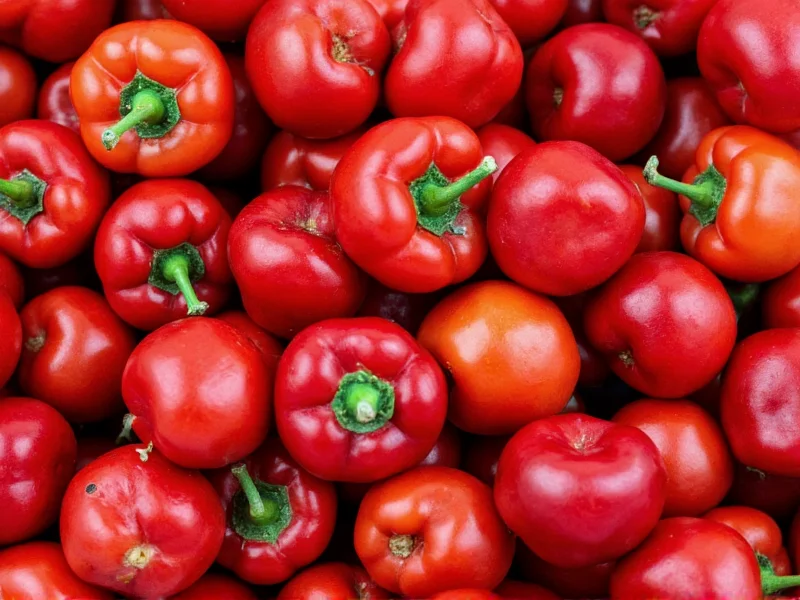Many people wonder are peppercorns actually berries – and the answer is yes, from a botanical perspective. The confusion arises because we commonly associate “berries” with sweet fruits like strawberries or blueberries, while peppercorns deliver a spicy, pungent flavor. Understanding the botanical classification of peppercorn berries helps clarify this culinary mystery.
The Science Behind Peppercorn Berries
Peppercorn berries come from Piper nigrum, a perennial climbing vine in the Piperaceae family. Each berry contains a single seed surrounded by fruit pulp. In botanical terms, a berry is a fleshy fruit without a stone produced from a single flower containing one ovary – which perfectly describes peppercorn berries.
What makes peppercorn berry plant facts particularly interesting is how processing transforms these berries into different pepper varieties. The same berry can become black, white, or green peppercorns depending on harvest timing and processing methods.
Types of Peppercorn Berries and Their Processing
The transformation from fresh berry to kitchen staple involves specific techniques that affect flavor, color, and texture. Here’s how the same peppercorn berry harvesting process yields different products:
| Pepper Type | Harvest Stage | Processing Method | Flavor Profile |
|---|---|---|---|
| Black Peppercorns | Unripe green berries | Sun-dried with outer layer intact | Strong, pungent, complex |
| White Peppercorns | Ripe red berries | Soaked to remove outer layer, then dried | Milder, earthier, less complex |
| Green Peppercorns | Unripe green berries | Preserved in brine or freeze-dried | Fresher, fruitier, less intense |
| Pink Peppercorns | Not from Piper nigrum | From unrelated Schinus plants | Sweet, resinous, mild |
True Peppercorns vs. Common Misconceptions
One of the most frequent points of confusion involves true peppercorn vs pink peppercorn varieties. While black, white, and green peppercorns all come from Piper nigrum, pink “peppercorns” are actually the berries of the Schinus molle or Schinus terebinthifolius trees, native to South America.
This distinction matters because peppercorn berry nutritional benefits differ between true peppercorns and substitutes. Piper nigrum contains piperine, the compound responsible for black pepper’s heat and potential health benefits, while pink peppercorns contain different compounds and can cause allergic reactions in some people.
Culinary Applications of Different Peppercorn Berries
Chefs select specific peppercorn varieties based on the desired flavor profile in dishes. Understanding how peppercorn berries become different pepper types helps explain their culinary applications:
- Black peppercorns: The most versatile variety, used in both whole and ground form across global cuisines. Their complex flavor develops when cracked just before use.
- White peppercorns: Preferred in light-colored sauces and dishes where black specks would be visually distracting, common in French and Chinese cooking.
- Green peppercorns: Often used in creamy sauces and with seafood, providing a fresher, fruitier pepper note without overwhelming heat.
- Red peppercorns: Rarely available dried, but fresh red peppercorns offer a sweet, complex flavor with subtle heat.
Nutritional Profile and Historical Significance
Peppercorn berries contain several beneficial compounds, most notably piperine, which may enhance nutrient absorption. While not consumed in large quantities, they contribute small amounts of manganese, iron, and vitamin K to the diet.
Historically, peppercorn berries were so valuable they were used as currency – the reason for the phrase “worth their weight in pepper.” Ancient Romans and later European traders went to great lengths to secure peppercorn berry supplies, making them one of the world’s oldest and most influential spices.
Storage and Usage Tips
To maximize flavor from your peppercorn berries:
- Store whole peppercorns in an airtight container away from light and heat
- Grind peppercorns just before use for optimal flavor (pre-ground pepper loses potency quickly)
- Consider using different peppercorn varieties in the same dish for complex flavor layers
- Toast whole peppercorns lightly before grinding to enhance their aromatic compounds
FAQs About Peppercorn Berries
Are peppercorns technically berries?
Yes, peppercorns are technically berries from a botanical perspective. They develop from the ovary of a single flower and contain a seed surrounded by fruit pulp, meeting the scientific definition of a berry. This explains the botanical classification of peppercorn berries as true berries despite their spicy rather than sweet flavor profile.
What's the difference between black and white peppercorn berries?
The difference comes from harvest timing and processing. Black peppercorns are unripe green berries that are sun-dried with their outer layer intact, creating their characteristic dark color and complex flavor. White peppercorns come from fully ripe red berries that are soaked to remove the outer fruit layer before drying, resulting in a milder, earthier flavor. This explains the difference between black and white peppercorn berries despite coming from the same plant.
Can you eat peppercorn berries raw?
Fresh peppercorn berries can be eaten raw but have a surprisingly complex flavor profile – simultaneously spicy, floral, and slightly sweet with citrus notes. However, they’re rarely consumed fresh outside their growing regions due to poor shelf life. The peppercorn berry harvesting process typically involves drying or preservation to extend usability, which also concentrates and transforms their flavor compounds.
Why are they called peppercorns if they're berries?
The term “corn” in this context comes from Old English “yrn,” meaning small seed or grain, not the American term for maize. Historically, “corn” referred to any small hard particle. So “peppercorn” literally means “pepper seed,” though we now know they’re actually whole berries. This historical linguistic evolution explains why we call these peppercorn berry plant facts despite the apparent contradiction in terms.
Are pink peppercorns the same as regular peppercorn berries?
No, pink peppercorns are not related to true peppercorn berries. They come from completely different plants in the Schinus genus (Brazilian or Peruvian pepper trees), while black, white, and green peppercorns all come from Piper nigrum. This is an important distinction in true peppercorn vs pink peppercorn identification. Pink peppercorns have a different chemical composition and can cause allergic reactions in some people, particularly those with tree nut allergies.











 浙公网安备
33010002000092号
浙公网安备
33010002000092号 浙B2-20120091-4
浙B2-20120091-4